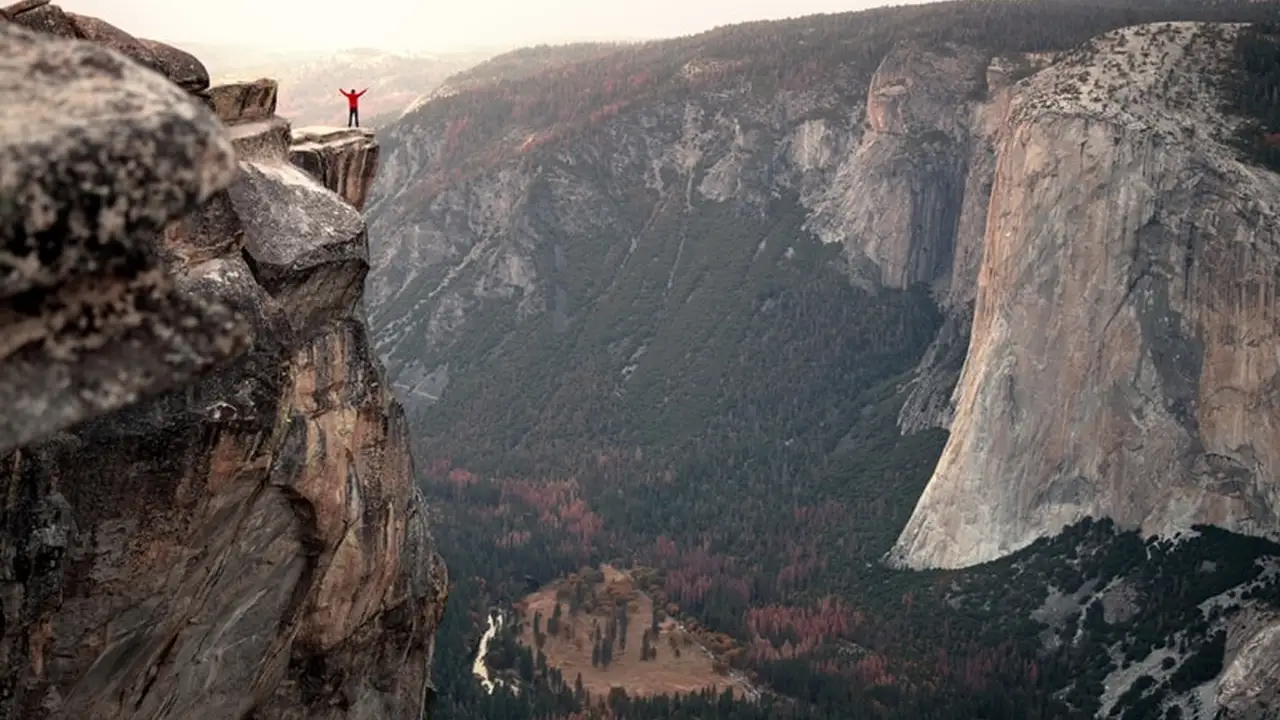Adventure Insurance vs. Standard Travel Insurance: Is There a Difference?
Embark on your next adventure with confidence. We compare the top 7 adventure travel insurance plans for US residents. Get covered for unexpected events and medical emergencies.

Understanding Standard Travel Insurance
Okay, so you're planning a trip. Maybe it's a relaxing beach vacation, a city tour, or a visit to see family. Standard travel insurance is generally designed for these types of trips. It typically covers things like:
- Trip cancellation or interruption due to illness, injury, or family emergency
- Lost or delayed baggage
- Medical expenses for illness or injury while traveling
- Emergency medical evacuation
These are all important things to consider, and standard travel insurance can provide a good safety net for many common travel mishaps. But what happens when your trip involves activities that are a bit more… adventurous?
What Qualifies as "Adventure Travel"?
Adventure travel isn't just about going somewhere exotic. It's about the *activities* you're doing while you're there. Think of it this way: if your trip involves a higher-than-average risk of injury or requires specialized equipment or training, you're likely engaging in adventure travel. Some examples include:
- Hiking or trekking at high altitudes
- Rock climbing or mountaineering
- Scuba diving or snorkeling
- Skiing or snowboarding (especially off-piste)
- White-water rafting or kayaking
- Mountain biking
- Zip-lining
- Safari tours
This list isn't exhaustive, but it gives you an idea. The key is to assess the inherent risks of your planned activities.
Key Differences Between Adventure and Standard Travel Insurance
Here’s where things get interesting. Standard travel insurance policies often have exclusions for certain activities considered "high-risk" or "adventure" activities. This means that if you get injured while rock climbing, for example, your standard policy might not cover your medical expenses or rescue costs. That's a problem, right?
Adventure travel insurance is specifically designed to fill these gaps. It provides coverage for the types of activities that standard policies exclude. Here are some key differences:
- Activity Coverage: This is the big one. Adventure policies cover a wider range of activities, including those listed above. Always check the policy details to ensure your specific activity is covered.
- Medical Coverage: Adventure policies often offer higher medical coverage limits, which is crucial if you're traveling to remote areas where medical care can be expensive. They may also cover specialized treatments like hyperbaric chamber therapy for divers.
- Emergency Evacuation: Evacuation can be incredibly costly, especially in mountainous or remote areas. Adventure policies often include higher limits for emergency evacuation, including helicopter rescue.
- Gear Coverage: Standard policies might cover lost luggage, but adventure policies may also cover damage or loss of specialized gear, like climbing equipment, diving gear, or ski equipment.
- Search and Rescue: If you get lost or injured while hiking or climbing, search and rescue operations can be expensive. Adventure policies can help cover these costs.
- Personal Liability: This can protect you if you accidentally injure someone else or damage their property during your adventure.
When Do You Need Adventure Travel Insurance?
The simple answer: if you’re participating in any activity that could be considered "adventure travel," you should seriously consider it. Don't assume your standard policy will cover you. Read the fine print! If you're unsure, contact your insurance provider and ask specifically about coverage for your planned activities.
Here's a checklist to help you decide:
- Are you engaging in any activity that carries a higher-than-average risk of injury?
- Are you traveling to a remote area where medical care is limited or expensive?
- Are you using specialized equipment that could be damaged or lost?
- Does your activity require specialized training or certification?
- Could you potentially need emergency evacuation, including helicopter rescue?
If you answered "yes" to any of these questions, adventure travel insurance is likely a smart investment.
Popular Adventure Travel Insurance Product Recommendations
Alright, let's get down to brass tacks. Here are a few reputable adventure travel insurance providers and examples of policies they offer. Keep in mind that policy details and pricing can change, so always get a quote and read the fine print before purchasing.
World Nomads Explorer Plan: Best Overall Adventure Travel Insurance
Description: World Nomads is a popular choice among adventure travelers, and their Explorer Plan is their most comprehensive offering. It covers a wide range of activities, including skiing, snowboarding, scuba diving, rock climbing, and more. They also offer high medical coverage limits and emergency evacuation coverage.
Key Features:
- Extensive activity coverage
- High medical coverage limits
- Emergency evacuation coverage (including helicopter rescue)
- Gear coverage
- 24/7 emergency assistance
Pros:
- Excellent activity coverage
- Reputable provider
- Easy to get a quote and purchase online
Cons:
- Can be more expensive than some other options
Ideal For: Travelers participating in a wide range of adventure activities, those seeking high coverage limits, and those who value a reputable provider.
Example Scenario: You're planning a month-long backpacking trip through Southeast Asia, which includes trekking, rock climbing, and scuba diving. The Explorer Plan provides comprehensive coverage for all these activities.
Pricing: Varies based on trip duration, destination, age, and other factors. Expect to pay around $100-$300 for a month-long trip.
IMG Signature Travel Insurance: A Solid Mid-Range Adventure Travel Insurance Option
Description: IMG offers a good balance of coverage and affordability. The Signature Travel Insurance plan covers a variety of adventure activities and offers decent medical and evacuation coverage. It's a good option for travelers who want more than basic coverage but don't need the most expensive plan.
Key Features:
- Coverage for many adventure activities
- Reasonable medical coverage limits
- Emergency evacuation coverage
- Trip interruption and cancellation coverage
Pros:
- Good value for the price
- Offers a variety of coverage options
Cons:
- Activity coverage may be less extensive than World Nomads
- Lower coverage limits compared to some premium plans
Ideal For: Travelers participating in a few adventure activities, those seeking a balance of coverage and affordability, and those who don't need the highest coverage limits.
Example Scenario: You're planning a ski trip to Colorado for a week. The Signature Travel Insurance plan provides good coverage for skiing and snowboarding, as well as medical expenses and trip cancellation.
Pricing: Varies based on trip duration, destination, age, and other factors. Expect to pay around $50-$150 for a week-long trip.
Travelex Travel Select: Adventure Travel Insurance for US Residents with Pre-Existing Conditions
Description: Travelex is a well-known travel insurance provider, and their Travel Select plan offers some coverage for adventure activities. While not as comprehensive as some other options, it can be a good choice for travelers with pre-existing medical conditions, as they offer waivers in certain situations. Read the fine print, of course!
Key Features:
- Coverage for some adventure activities
- Pre-existing condition waivers available (under certain conditions)
- Trip cancellation and interruption coverage
Pros:
- May be a good option for travelers with pre-existing conditions
- Reputable provider
Cons:
- Activity coverage is limited
- Lower coverage limits compared to some other plans
Ideal For: Travelers with pre-existing medical conditions, those participating in less risky adventure activities, and those who value a reputable provider.
Example Scenario: You're planning a hiking trip in the Smoky Mountains, but you have a pre-existing heart condition. Travelex Travel Select may offer a waiver for your condition, providing coverage for medical expenses related to it.
Pricing: Varies based on trip duration, destination, age, and other factors. Expect to pay around $40-$120 for a week-long trip.
Comparing the Products
Here's a quick comparison table to help you see the differences at a glance:
| Feature | World Nomads Explorer | IMG Signature Travel | Travelex Travel Select |
|---|---|---|---|
| Activity Coverage | Extensive | Good | Limited |
| Medical Coverage | High | Moderate | Moderate |
| Emergency Evacuation | Yes | Yes | Yes |
| Gear Coverage | Yes | No | No |
| Pre-Existing Conditions | Limited | Limited | Waivers available (under certain conditions) |
| Price | Higher | Mid-Range | Lower |
Important Considerations Before You Buy
Before you purchase any adventure travel insurance policy, keep these points in mind:
- Read the Fine Print: This is crucial! Understand what activities are covered, what the exclusions are, and what the coverage limits are.
- Check the Activity List: Make sure your specific activity is listed as covered. If it's not, contact the provider to see if you can add it.
- Understand Exclusions: Common exclusions include reckless behavior, drug or alcohol abuse, and participating in activities against local regulations.
- Assess Your Needs: Consider your destination, planned activities, and personal risk tolerance. Choose a policy that provides adequate coverage for your specific needs.
- Get Multiple Quotes: Compare prices and coverage from different providers to find the best deal.
- Consider Your Deductible: A higher deductible will lower your premium, but you'll have to pay more out of pocket if you file a claim.
- Look for 24/7 Assistance: Make sure the provider offers 24/7 emergency assistance so you can get help whenever you need it.
- Check Reviews: Read reviews from other travelers to get an idea of the provider's customer service and claims process.
Final Thoughts
Adventure travel insurance is an essential investment for anyone participating in activities that carry a higher-than-average risk. Don't rely solely on your standard travel insurance or health insurance. Protect yourself from unexpected medical expenses, emergency evacuations, and other potential mishaps. By doing your research and choosing the right policy, you can enjoy your adventure with peace of mind.
:max_bytes(150000):strip_icc()/277019-baked-pork-chops-with-cream-of-mushroom-soup-DDMFS-beauty-4x3-BG-7505-5762b731cf30447d9cbbbbbf387beafa.jpg)






